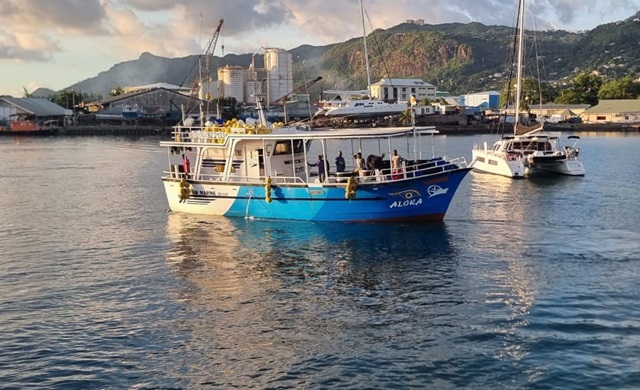Seychelles' semi-industrial fish catch increases by 17% in Q3
Fisheries |Author: Alisa Uzice Edited by: Betymie Bonnelame | December 18, 2023, Monday @ 12:33| 22619 views
Payet said that this increase in catch yield is because the fishermen are working harder and staying longer at sea. (Naron Payet)
Fishers in the semi-industrial industry in Seychelles have recorded a 17 percent increase in the amount of fish they caught during the third quarter of this year compared to last year during the same period.
According to the fisheries research section at the Seychelles Fishing Authority (SFA), the preliminary semi-industrial catch data for 2023 show that the 17 percent increase in catches may be attributed to several factors.
"There was an increase in the average number of vessels active per month during the same time frame, from 31 vessels in 2022 to 34 vessels in 2023," said the report.
It added that "even if the number of trips decreases from 137 to 122, we noticed that the average trip during increases from 15 days during July to September in 2022 to 18 days in the same period in 2023."
This data is corroborated by the fishermen who confirmed that they did see an increase in catch yield.
Naron Payet, the owner of Tropical Tuna company, told SNA "These last few years we saw a big decline in catch yield, only an average of three and a half tonnes per month, this year there was a marked increase where a boat that was at sea for two weeks brought in an average of four to five tonnes and a boat doing a 20-day trip brought in about seven tonnes."
 |
| Payet said that the climate has shifted and it is more unpredictable now. (Naron Payet) Photo License: All Rights Reserved |
Payet, who has seven years of experience in this industry and five boats in his fleet, said that this increase in catch yield is because the fishermen are working harder and staying longer at sea.
"In the past in one trip we would spend about 10 to 12 days at sea, but now we are staying up until 18 to 24 days," he added.
Payet said that the climate has shifted and it is more unpredictable now.
"Before during the Southeast Monsoon between May to October, it was hard to fish, it's supposed to be the off season, but this year the fish were biting. Also, I believe that the large-scale industrial vessels also affect the tuna population where it's not regenerating as it should. Before we could stay in one location for a month to fish tuna, but now these fish are moving on after about two weeks," he explained.
Payet said that as a result, the company had to increase the amount of lines and hooks they put out during one trip.
"In the past, we used to use only seven to eight sets of long lines with about 1000 hooks to get this amount of fish but now we see ourselves having to use thirteen to eighteen sets. We also use artificial bait now. It's an industry that faces many challenges, at least this year we were able to make some stable income during the third quarter," he said.
Seychelles, an archipelago in the western Indian Ocean, put in place in August, a moratorium on the importation and chartering of longline fishing vessels for use in the semi-industrial tuna fishery.
Vice President Ahmed Afif said at the time that the government has seen a significant increase in the number of longline vessels though there is limited fish stock.
"With the increase in vessels, productivity by each vessel has dropped considerably. Some of these boat owners are facing difficulties to pay off their loans," said Afif.
Back
